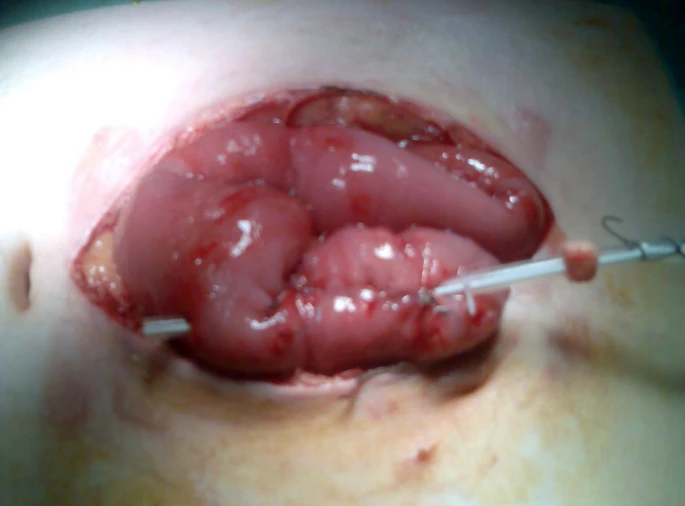A 17-year-old boy was involved in a road traffic accident at the age of 12. He suffered irreversible damage to his brain. This accident rendered him comatose, and bedridden. This is a case, where he suffered jejunal perforation after an emergency surgical intervention.
He was placed on continuous parental nutrition after the accident. 5 years later, he underwent surgery. This resulted in jejunal perforation.
Jejunal perforation: Change in the feeding tube
His doctors had advised changing his feeding tube from Percutaneous endoscopic gastrostomy (PEG) to feeding jejunostomy (FJ). This was due to a mechanical issue reported in the PEG tube. It was inserted 25 cm distal to the duodenojejunal flexure.
Post-operative complications
24 hours after the surgery, the patient appeared distressed. Communication was tricky as he was unable to talk. Therefore, a contrast study was done. However, this report turned out normal.
Further deterioration of the condition
Over the next 24 hours, his heart rate and WBC count increased and he developed a fever. X-ray showed lower lobe consolidation. Moreover, on chest auscultation, basil crepitations were heard. Therefore, he was diagnosed with aspiration pneumonia.
Despite intravenous antibiotics administration to treat the condition, he continued to be febrile the next day.
Emergency surgical intervention
An emergency exploration of the abdomen was initiated because his condition was worsening. The laparotomy tube was found to have perforated directly from the jejunum into the peritoneum. The minimal bile present in the peritoneum indicated that the perforation was recent.
Discharge and follow up
The patient was kept under observation. Furthermore, his tube was also replaced. He had a slow recovery and was discharged in 3 weeks.
References:
https://jmedicalcasereports.biomedcentral.com/articles/10.1186/1752-1947-2-224




